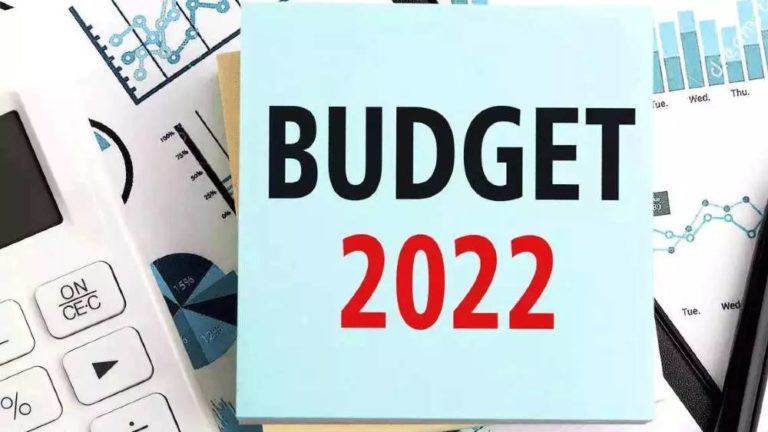While a wide review of Budget FY2023 has taken place, many failed to notice good achievements of the government on fiscal front for the current year viz., FY2022.
- Tax revenues to grow by 23.8% in FY2022. However, Non-tax revenues estimated to grow by 50.5%;
- Total Capital Receipts, which have corresponding liabilities, estimated to dip by 9.9% – a significant achievement while pandemic impacts were still in existence in FY2022;
- The government was able to control the YoY growth of overall Fiscal expenditures in FY2022 at just 7.4%. This is quite impressive considering the fact that the total Capital expenditures moved up by 41.5% in FY2022 over the actuals of FY2021. This was possible as the government effectively controlled the YoY growth of total Revenue Expenditures (which are incurred basically for the maintenance of the system) at just 2.7%! Of course, total Capital Expenditures of FY2022 (RE) include Rs.51,971 crore spent on capital infusion/ loan for Air India / AIAHL, which were not backed by assets. Even after excluding this amount, the Capital Expenditure in FY2022 is estimated to go up by 29% over the Actuals of FY2021 – quite commendable achievement;
- Robust tax buoyancy and effective control on Revenue Expenditures brought down the Revenue Deficit to 4.7% as against the original Budget Estimate of 5.1% for FY2022. However, the Fiscal Deficit for FY2022 is now estimated to be 6.9% as against the Budget Estimate of 6.8% – this is mainly due to the settlement of liabilities of Air India / AIAHL. If we exclude this one-time liability, the Revised Estimate of Fiscal Deficit of FY2022 would also be less than the original Budget Estimate of 6.7%.
Thus, the Central Government has done really well for the current fiscal year FY2022.
Good Intentions on Macro Fiscal Parameters Front
Despite total Tax Revenues expected to grow just by 9.6% and the Non-Tax Revenues estimated to actually fall by 13.7% in FY2023, the Government has proposed to control the yoy growth of Capital Receipts at mere 2.9%. Since entire Capital Receipts come with corresponding liabilities, such a great restraint on the part of the government is a welcome move.
The government hopes to keep the total Revenue Expenditures (incurred basically for the maintenance of the system and which do not create any productive assets) almost stagnant in FY2023. It is projected to grow by mere 0.9% in FY2023 over FY2022 (RE) – another good intention on the part of the government.
While the government intends to control the Maintenance (Revenue) expenditures almost constant in FY2023, it has proposed to increase the total Capital Expenditures by 24.3% in FY2023 over FY2022. If we exclude the capital expenditure incurred for settling the dues of AI/ AIAHL, then the actual Capital expenditure of the Central Government goes up by 36% for FY023. Again, very good intention as the year FY2023 would be the first year of significant economic recovery after two years (FY2021 and FY2022) of stagnation in the GDP (i.e. fall in absolute GDP in FY2021 would be approximately equal to Gain in Absolute GDP in FY2022). Hence, this kind of government intention to prop the growth through Capital Expenditures is highly appreciated.
Such prudence on the Revenue Expenditure front is expected to help the government to reduce the Revenue Deficit to 3.8% and Fiscal Deficit to 6.4% in FY2023 from 4.7% and 6.9% respectively in FY2022.
The government has also reduced reliance on off-balance sheet borrowing in this Budget.
Thus, the government’s stated intentions on macro fiscal front are really very good. Stock market would like such proposals / good intentions. Therefore, we do not see any major risk factor to the domestic equity markets in the short-term.
However, there are certain areas of concern. Causes of such concerns arise from rising oil prices and substantially increased fiscal burdens imposed by the Covid pandemic in the last two years.
- Fiscal Deficit at 6.4% is quite high. If oil price goes far beyond $100 a barrel or there is any unexpected setback to any of major sectors of the economy, then the Fiscal deficit can go beyond this Budget Estimate- such a scenario may not be liked by the rating agencies and FIIs;
- Total Debt Receipt is estimated to jump by 17% and market borrowings to go up by 32% in FY2023 over FY2022 (RE) – tough scenario for the bond market and it also has long-term implications for the fiscal conditions. To be fair, these unfavorable conditions are created by a single exogenous factor viz. Covid pandemic;
- Though Capital Expenditure is estimated to grow by 36%, it is worrying to know that the share of Capital expenditure in the Total Expenditure of the government is shrinking – it is just 19% of total expenditures. The remaining 81% of total expenditures are going in for the maintenance (Revenue Expenditures) of the system. Thus, the Budget’s significance or the Government’s role in propping up capital expenditure is gradually shrinking over the years;
- Proportionately, the burden of debt servicing is rising – almost one-fourth of the total Budget size is estimated to go for meeting the interest burden alone. For FY2023, interest payment is estimated to be Rs.9.41 lakh crore which is 24% of total Central Government’s expenditure of Rs.39.45 lakh crore!
In our view, in the short-term, the Budget is good for the stock market, which would like a steep increase in the capital expenditures. The Budget hasn’t proposed any additional burden to the stock market participants. Only one sector in the stock market which could feel a burden is the Fertilizer sector. Though there is no significant moderation in the prices of inputs of fertilizer, the Budget has reduced the fertilizer subsidy by 25% to Rs.105,222 crore in FY2023 from Rs.140,122 crore estimated for FY2022. Delay in subsidy payments to the industry or steep hike in fertilizer prices would impact the prospects of the fertilizer industry quite adversely.
India’s growth outlook remains robust – GDP is expected to grow in the range of 8% to 8.5% in FY2022. Goods exports are expected to grow at a record level in FY2022 and also in FY2023. GST collections remain very strong and India’s GDP contraction in FY2021 revised downward to 6.6% from the previous estimate of 7.3% contraction. Service exports are also growing at over 18% in FY2022. Core sector growth in December 2021 improves over growth posted in November.
Thus, in this background, the Budget is expected to give further boost for the current Bull Run in the stock market to continue at least till the end of 2022.
Risk to the markets may emanate from any of three possible factors:
- Any unexpected setback to this robust recovery in economic growth due to possible emergence of any new deadly variant of Coronavirus;
- Crude oil price going up substantially beyond $100 a barrel; and
- Reversal of US FED monetary policy leading to more than 5% or nearly 10% depreciation in rupee exchange rate by end of FY2023.
Any of these probable factors could worsen the fiscal conditions and the same possibly could lead to downgrade of India’s rating by the international agencies and also to steep outflows from the FIIs. Investors need to Remain Alerted to These Possible Scenarios.
























